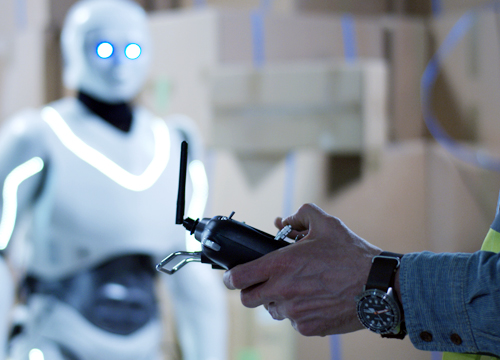Teleoperated Robots Featured Pattern: P1703 October 2021

Companies and researchers continue to make rapid improvements to robotics hardware, but the software and AI for controlling robots is struggling to keep up. Although AI has proved useful for some robotics purposes, systems still struggle to complete common tasks such as picking and placing objects of irregular shapes. Because of AI's limitations, companies are exploring the use of teleoperation to enable operators to control advanced robots remotely. In such cases, operators might control robots directly or issue high‑level commands to help them handle unusual situations. Companies continue to make advances in the design of robotics hardware. For example, Xiaomi Corporation (Beijing, China) recently announced its CyberDog quadruped robot, which has a form factor similar to that of the Spot robot from Boston Dynamics (Hyundai Motor Group; Seoul, South Korea). And Tesla (Palo Alto, California) CEO Elon Musk recently announced that the company will develop a humanoid robot that can perform labor-intensive tasks. Musk claimed that the company will show a prototype Tesla Bot in 2022.
Abstracts in this Pattern:
Despite ongoing advances in robotics hardware and robot designs, robots' intelligence limits the types of applications in which companies can use them. As a result, companies are exploring the use of teleoperation to enable operators to control complex robots. Sarcos Technology and Robotics Corporation (Salt Lake City, Utah) recently demonstrated its SenSuit garment, which enables a worker to control a Guardian XT mobile robot system remotely. In a video, a worker on the ground uses the SenSuit to make a robot on a boom lift trim a tree. Sarcos is pitching this technology as a tool for removing workers from dangerous work environments. And a new café in Tokyo, Japan, is using teleoperated humanoid robots to serve food and drinks to customers. The café's remote operators are individuals who cannot leave their homes for long periods—for example, people with a physical disability or parents who must stay home to watch a child. Although the owner created the café as a novelty, it illustrates the potential of remote workers' controlling humanoid robots to complete a variety of tasks. Continuing advances in robotic hardware and the development of reliable low‑latency communication networks could make the teleoperation of robots increasingly common.